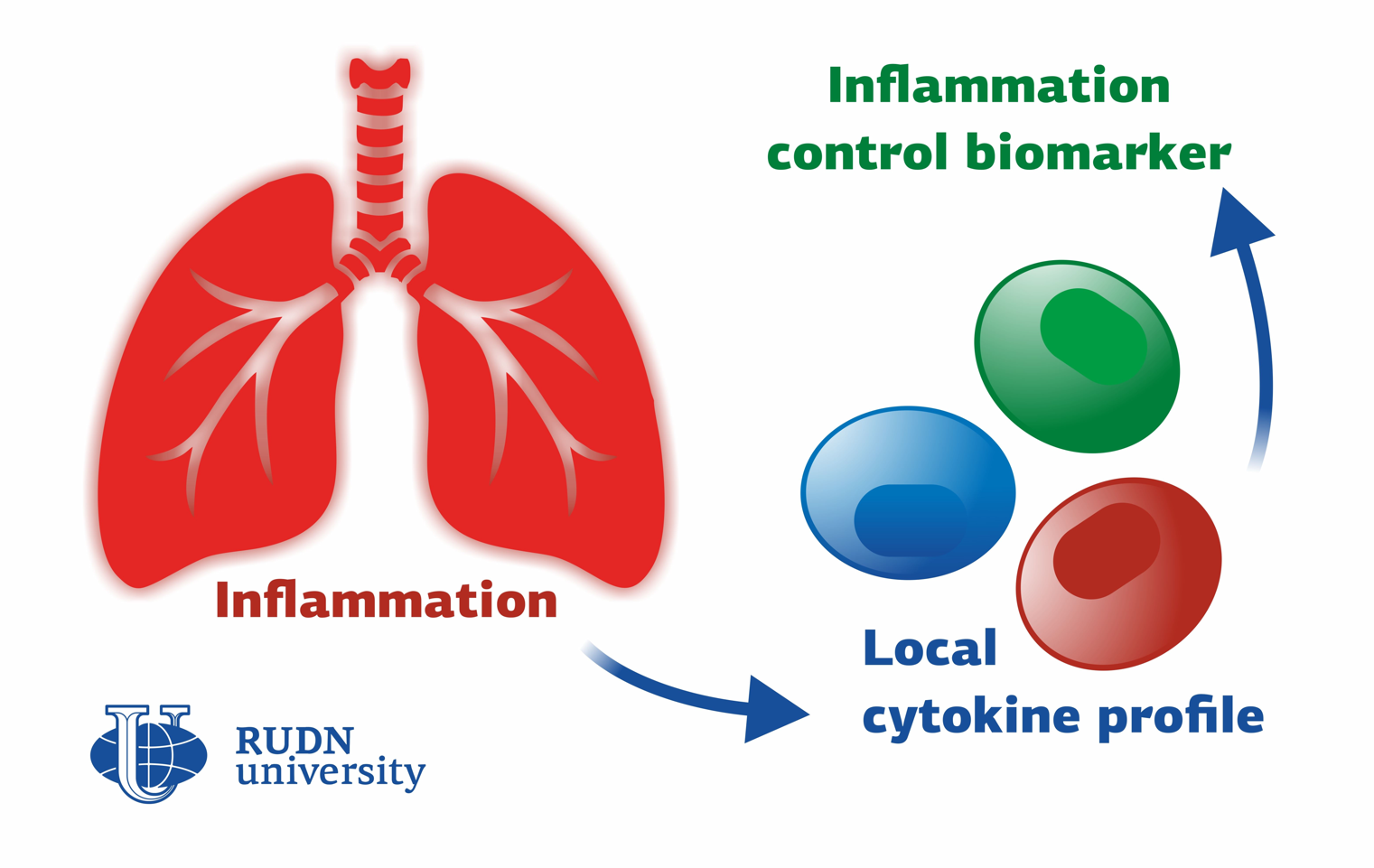RUDN University Immunologists Developed a Method for Assessing Inflammation Levels in Patients with Respiratory Tract Diseases

Cytokines are signal molecules of our immune system that determine the inflammation profile in case of an infection or allergy. Some of the 200 types of cytokines aggravate the inflammation and some mitigate it. Because different cytokines can have the same function, many types can be found in a patient at the same time. The composition and number of each type of cytokines form the so-called cytokine profile. A team of immunologists from RUDN University compared the profiles of asthma patients with coexisting diseases and discovered certain regularities that could help predict the course of the disease and promptly prevent complications.
“The course of the disease is determined by peculiarities of respiratory mucosa inflammation, and effective control over the inflammation process depends on the timely evaluation of its activity. Knowing the parameters of local cytokine profiles, a specialist could not only control the efficiency of treatment but also prevent complications and deterioration of the patients’ general state,” said Prof. Natalia Tataurshchikova, MD, an allergologist-immunologist, and the Head of the Department of Medical and Social Adaptology at RUDN University.
To analyze cytokine profiles, the team took samples of biological materials from the nasal cavities of 57 patients that suffered from asthma and a type of allergic rhinitis or hay fewer. This condition is associated with a runny nose, sneezing, and other sensitive reactions to pollen, animal hair, and other allergens. The team also included in the study 25 patients that, in addition to asthma, were diagnosed with herpes and 21 participants with blood vessel diseases. The control group consisted of 11 asthma patients with no coexisting conditions.
Using the immunoenzymatic approach, the team measured the levels of cytokines that are most typical for allergic rhinitis. These cytokines were IL-4 and IL-10 that limit the spread of the inflammation, as well as IL-2 and IL-8, interferon γ — INF, and tumor necrosis factor α-TNF that promote it. The immunologists managed to identify cytokine profile dynamics for different combinations of conditions. For example, changes in the levels of IL-10 and γ — INF are typical for asthma patients without underlying conditions; the levels of IL-2 and IL-8 should be measured if a patient has blood vessel diseases, and acute herpes leads to increased IL-8 levels, reduced γ — INF level, and changes in α-TNF. Using this data, one could monitor the course of a disease. For example, an increase in the level of α-TNF may indicate that the disease is taking a chronic form. By analyzing a patient’s cytokine profile, a doctor may be able to timely identify dangerous tendencies and prevent complications.
“Taking swabs from mucous membranes and enzyme immunoassay are quite simple and cheap procedures. We believe it is important to include them in diagnostics and management protocols of different asthma phenotypes, including asthma with allergic rhinitis,” added Prof. Natalia Tataurshchikova from RUDN University.
The results of the study were published in the World Allergy Organization Journal.
Matilda Pavlovna Mityaeva was born in 1925. In November 1942, she volunteered for frontline duty. She participated in the Great Patriotic War from November 1942 to June 1945 as part of the 53rd Infantry Division of the 475th Infantry Regiment. She was wounded twice.
The team led by Sergey Zyryanov, Head of the Department of General and Clinical Pharmacology, became the winner of the All-Russian competition of scientific projects "Technologies for Human Health".
RUDN University constantly adapts to the changes of the modern world and responds to challenges flexibly. This allows us to keep the standard of a world-class research university. The sphere of science is no exception. Peter Dokukin, Head of the Research Division, presented the updated R&D Programme at the meeting of the RUDN University Academic Council.
Matilda Pavlovna Mityaeva was born in 1925. In November 1942, she volunteered for frontline duty. She participated in the Great Patriotic War from November 1942 to June 1945 as part of the 53rd Infantry Division of the 475th Infantry Regiment. She was wounded twice.
The team led by Sergey Zyryanov, Head of the Department of General and Clinical Pharmacology, became the winner of the All-Russian competition of scientific projects "Technologies for Human Health".
RUDN University constantly adapts to the changes of the modern world and responds to challenges flexibly. This allows us to keep the standard of a world-class research university. The sphere of science is no exception. Peter Dokukin, Head of the Research Division, presented the updated R&D Programme at the meeting of the RUDN University Academic Council.